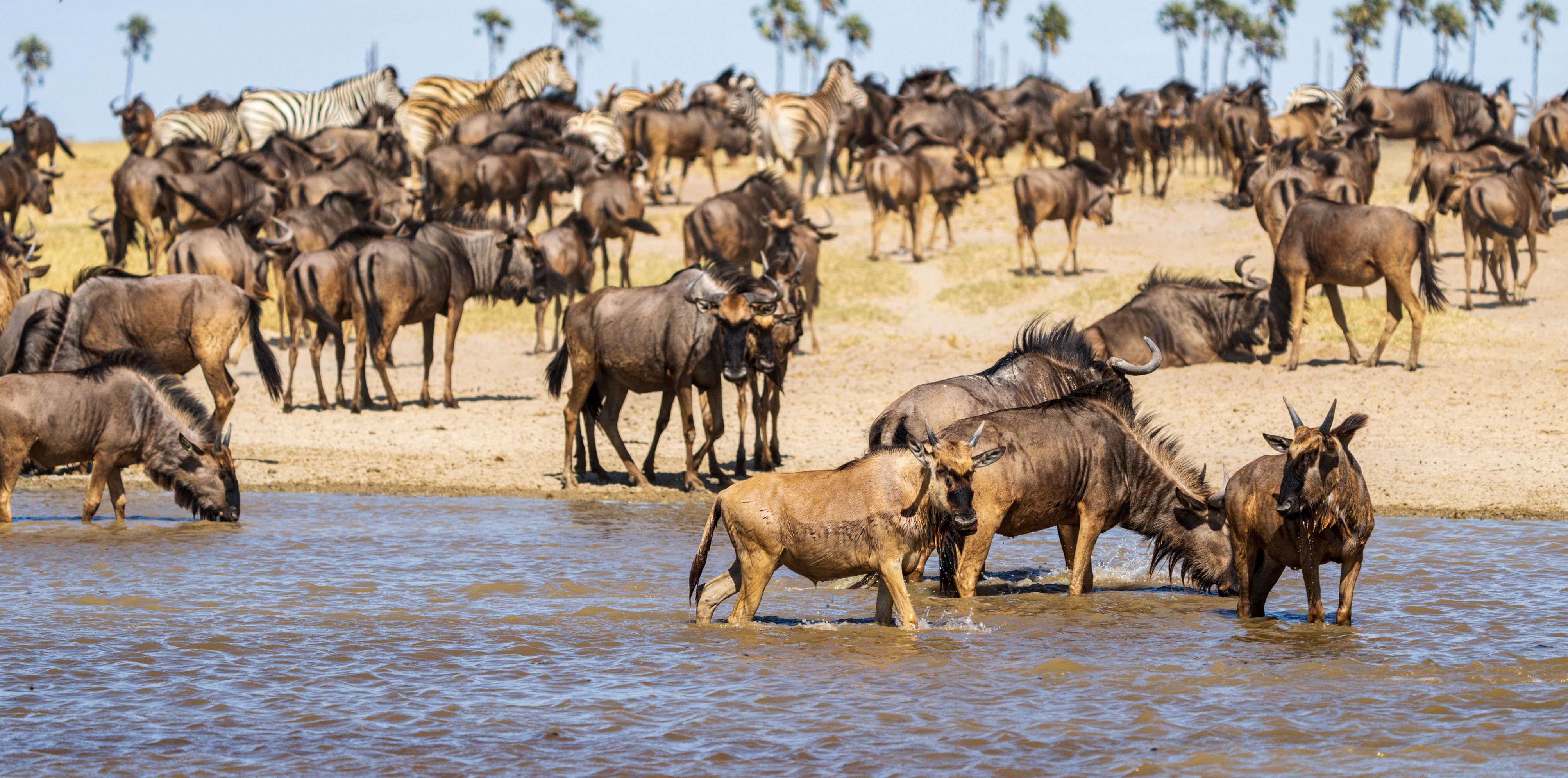
Creating policies that address biodiversity loss
To address the challenges of biodiversity loss, governments around the world must collaborate to develop and improve local, national and international policy frameworks that protect the ecosystems we all need to thrive.
Our role
Conservation International works with governments to help them integrate science and conservation priorities into their national strategies so that they can meet global biodiversity goals—including National Biodiversity Strategy and Action Plans (NBSAPs) under the Kunming-Montreal Global Biodiversity Framework (GBF).
With 23 targets aimed at protecting Earth’s life support systems, the GBF is the world’s most important tool to protect nature. Implementing the GBF is an important opportunity to create ambitious policies to halt and reverse biodiversity loss by 2030.
Conservation International’s NBSAP Support Initiativehelps countries find solution that are good for both climate and biodiversity and create economic incentives to protect nature, including reforming or repurposing subsidies that harm biodiversity.
Download
Advancing Priorities Through the Global Biodiversity Framework
Conservation International has developed the following brief to foster understanding of the Global Biodiversity Framework and the NBSAP update process (also available in Español and Français).
Biodiversity policy priorities
Conservation International works with governments to integrate science and conservation priorities into the NBSAP process. We help shape biodiversity policies both at the national level, supporting domestic financial planning, while advocating for strongerglobal commitments to fund biodiversity.
Advancing nature for climate
Biodiversity loss and climate change are two sides of the same coin — and share similar solutions. Conservation International advocates for protecting high-carbon ecosystems — such as old growth forests, mangroves and peatlands — and making sure these protections are part of national policies under the global biodiversity framework.
DOWNLOAD DOCUMENTS:
Incentives for nature
To close the funding gap for biodiversity, we help createeconomic incentives to protect nature — including changing subsidies that harm it — while promoting a fair and equitable nature-positive economy where everyone, especially the most vulnerable, can actively participate, benefit and thrive. In collaboration with partners, we will undertake a “just transition” approach to phasing out subsidies that are having negative environmental outcomes, while repurposing or transitioningfinancing to supports nature positive outcomes and fulfill national biodiversity policies under the GBF.
DOWNLOAD DOCUMENTS:
Mobilizing finance for biodiversity
There is an annual $700 billion funding gap for biodiversity. Closing the gap will require many diverse sources of financing, including contributions to the new Global Biodiversity Framework Fund launched by the Global Environment Facility (GEF), international aid, biodiversity credits and wider public and private investments.
Conservation International’s Lui-Walton Fellow Carlos Correa has hosted series of webinars to advocate for mobilizing greater financial resources toward key biodiversity goals:
VIEW VIDEOS:
Promoting nature-positive economies
The NBSAP update process reflects an opportunity to advance sustainable production and nature-positive economies. Linking protection and production, and prioritizing conservation in places that people depend on for their livelihoods, ensures that conservation enhances human well-being.
DOWNLOAD DOCUMENTS:
Ensuring participation of Indigenous Peoples and local communities
When updating their NBSAPs, countries must ensure the full, equitable and inclusive participation of Indigenous peoples and local communities. Conservation International advocates for NBSAP targets and processes that involve and strengthen the rights of Indigenous Peoples and local communities and recognize their land tenure.
DOWNLOAD DOCUMENTS: